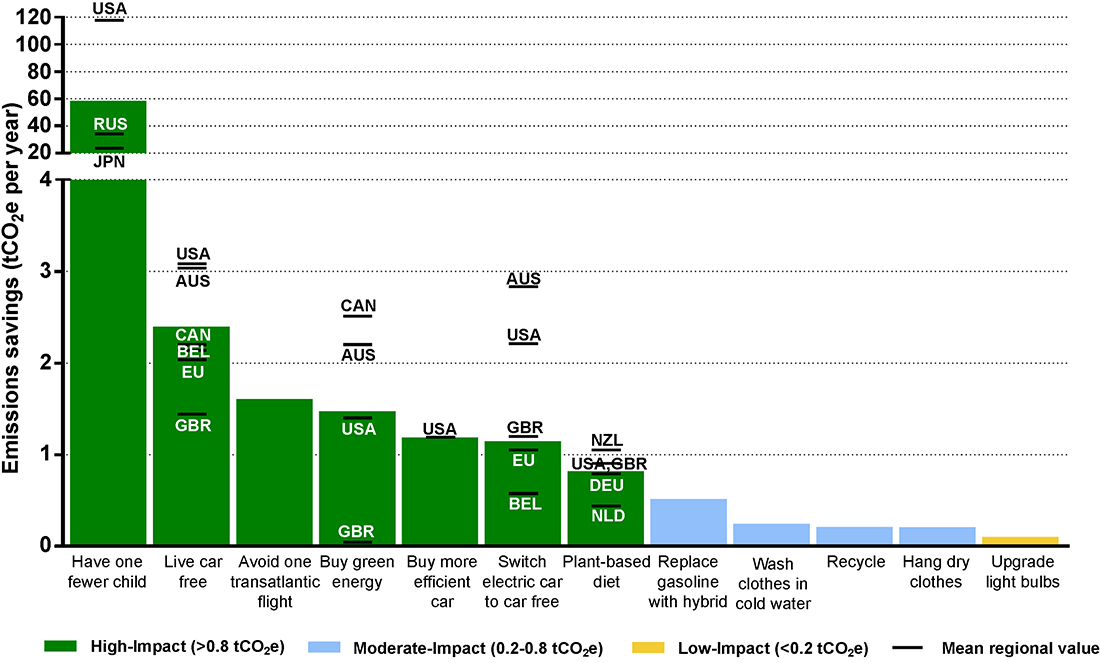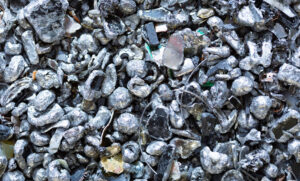Whether it’s driving, fertilising crops or disposing of trash, at some point, greenhouse gases such as CO2 are produced. Even turning the lights on comes with a carbon footprint, as more than 60% of Australia’s electricity is produced by burning coal.
But what exactly is your carbon footprint? Simple: just add up how much greenhouse gases are produced due to whatever you do on your daily routine over 1 year. That’s your carbon footprint.
Here’s a handy calculator so you can give it a go now.
Your carbon footprint
It is estimated that the average Australian has a carbon footprint of about 15 tonnes of CO2 per year. That’s way, way more than the 2 tonnes recommended for each of us if we want to keep global warming under 2 degrees Celsius by 2050.
But it is not just in Australia. All around the world, people’s carbon footprints are way out of hand. According to a 2016 report from the European Commission, about 120 countries have a per-person carbon footprint above the recommended figure of 2 tonnes of CO2 per year.
Increasing global emissions of greenhouse gases will lead to higher global temperatures, affecting the health of the animals living in our oceans and the productivity of our crops, just to mention two examples.
It is estimated that, with the current trends, by 2100, sea levels will rise by around a metre and hurricanes will be stronger and more intense.
So what can we do to make a difference on these grim forecasts? Some of the options might be a bit surprising.
You can start in your own home, says Dr Louise Barton, Senior Lecturer at UWA’s School of Earth and Environment.

The little things
Essentially, any little thing you buy comes with an environmental price tag. At some point during its production, some amount of greenhouse gases were produced. So the less you buy, the better.
Just ask yourself, do you really need this?
“Everything you own is likely to have been produced via the combustion of fossil fuels. So if you don't need it, don't buy it,” Louise says.
Another way to improve your carbon footprint is in transportation, which, along with manufacturing, accounts for more than 60% of Australia’s energy consumption, according to official figures.
Bottom line: leave your car at home and cycle, walk or catch public transport. Also, don’t forget about electricity.
Turn it off
We all like a hot shower, but do you know how long you spend in the shower? Or have you noticed how often you turn on the lights during the day?
“Turn the lights off and put another layer of clothing on/off! Turning off appliances (including those on standby) when not in use, conserving your use of heating and cooling and choosing appliances with low energy use ratings will help decrease your electricity consumption and related CO2 emissions,” Louise suggests.
If your budget allows it, switch to more energy-efficient systems, says Dr Paul Hardisty, former director of CSIRO’s Land and Water Flagship. “Make your home energy smart—insulation, smart meters, solar panels, energy-efficient appliances,” he says.
In the long run, these small changes will have a big impact on your carbon footprint. For Louise, her energy-efficient lifestyle meant that she managed to reduce her carbon emissions to under 2 tonnes of CO2 per year.
But all of these changes are minuscule compared to one major lifestyle choice you can make: have fewer children.
Keep it in your pants
According to a 2017 study, reducing your family size by just one member could make a far bigger impact on climate change. The study, led by Seth Wynes from the Centre for Sustainability Studies at Lund University, Sweden, showed that, for each household, raising one less child could result in savings of more than 58 tonnes of CO2 per year. That’s a bigger impact than all other measures put together.
Offset your emissions
Finally, you can go the extra mile by fighting back against the inevitable CO2 you produce. Just join a provider such as Carbon Neutral. They will plant native trees to counteract your greenhouse gas emissions on degraded land in Australia, says Paul.









